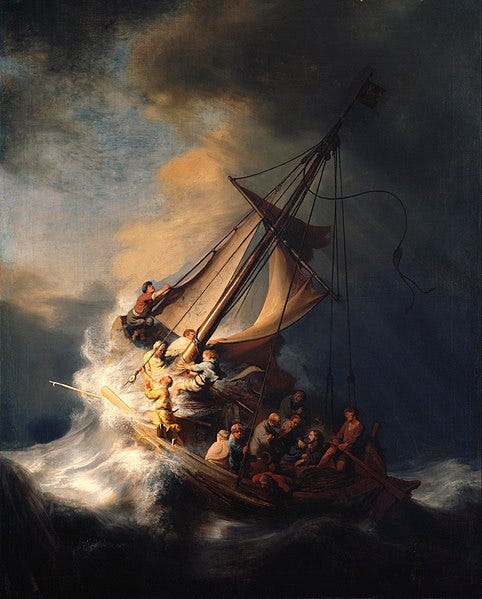Faith and Hope
Saturday, February 1st Readings Reflection: Saturday of the Third Week in Ordinary Time
Today’s Epistle begins with the following beautiful verse on the virtues of faith and hope: “Now faith is the substance of things to be hoped for, the evidence of things that appear not” (Heb 11:1 DRB).
Faith and hope are two of the three theological virtues, along with charity. As theological virtues, their object is God. The Baltimore Catechism defines faith as “the virtue by which we firmly believe all the truths God has revealed, on the word of God revealing them, [W]ho can neither deceive nor be deceived” (Q. 122). It likewise defines hope as “the virtue by which we firmly trust that God, [W]ho is all powerful and faithful to His promises, will in His mercy give us eternal happiness and the means to obtain it” (Q. 123).
St. Thomas Aquinas wrote that the object of faith is happiness, “which consists in the clear vision of God” (Commentary on Hebrews). Happiness is man’s final end, the ultimate purpose that all men seek. This desire for happiness takes on many different appearances and pursuits during our earthly lives. For one who has faith, this pursuit of happiness is rooted in the hope of eternal life, with the knowledge that only in Heaven shall we experience the ultimate fulfillment of our desire for happiness. In the words of St. Augustine, our hearts are restless until they rest in God. Thus we can see that there is an intrinsic connection between faith and hope: “The end…of faith on earth is the attainment of the thing hoped for, namely, of eternal happiness” (Aquinas, Commentary). This attainment can never truly be fulfilled in this life, and as such, faith requires the continual presence of hope to desire its unpossessed end.
We know through faith that God’s love is eternal and that consequently, “hope does not disappoint us” (Rom 5:5 RSV-CE). I once heard a sermon in which the priest described hope as the virtue by which we hope to possess a good from God as from a Friend, from an eternally loving Father. By the virtue of hope, we hope for what we believe by faith, which is that we will one day merit to attain the eternal life wrought for us by the Passion, Death, and Resurrection of Jesus Christ. For this reason, the Nicene Creed is a prayer of both faith and hope, for we express what we believe through faith and what consequently we hope for.
Today’s Gospel recounts Christ’s calming of the storm. The Apostles were terrified of the wind and waves, but Jesus rebuked the wind and asked the Apostles why they did not yet have faith. As the storm was instantly calm around them, Our Lord reminded His Apostles of the necessity of faith and hope in the midst of trials, relying on God’s grace to bring about our eternal happiness even when all semblance of happiness seems lost. This carries an important message for our own lives, demonstrating the importance of faith and hope in attaining the happiness for which we long by our very natures. In the words of St. Paul, “Let us hold fast the confession of our hope without wavering (for [H]e is faithful that hath promised)” (Heb 10:25 DRB).



Chantal, I love your picture. Rembrandt's Christ in the Storm has also been used to depict the Barque of Peter. The Barque, boat, is the Church from which Christ teaches and guides through the hands of Peter. Note that Peter is at the tiller without fear, eyes on Christ. The other eleven disciples depict the various attitudes within the Church: Those who contemplate Jesus words (note the three disciples wo listen with rapt attention), those that pray (see the one disciple with hands clasped), those that fight against the storm (those who seek to evangelize the worldly culture), Those that are on board who refuse to listen (note the one disciple with his head turned away from Christ), and those who are afraid (note the disciple throwing up to Christ's left). The Church has always been navigating through stormy waters... The Lord did tell Peter to put out into deep waters and lower his nets. That is the Church's mission with the Lord always with us ... Anyway, some extra info. Every time I see that painting I can't help but marvel at Rembrandt's insight. Great reflection.
Great faith